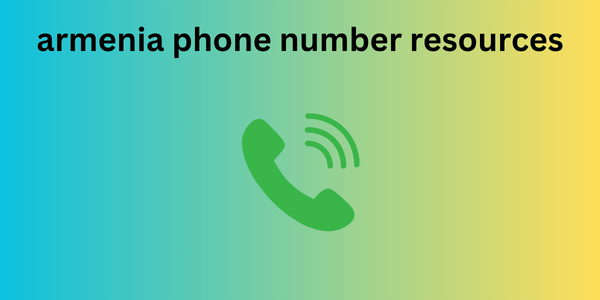So, how can you stand out from the crowd?
One of the best ways to get your content noticed is to create a well-planned content calendar.
This calendar can help you plan, track important events and dates, collaborate with other creators or team members, and see all your content in one place.
Follow these six simple steps to create a calendar.
What is a Content Calendar?
A content calendar (also known as an editorial calendar) is a tool used by content creators, bloggers, businesses, and organizations to plan and schedule their content in advance.
It is usually a document (digital or physical) that allows you to organize your marketing efforts in a systematic way.
A well-structured content calendar includes important dates armenia phone number resources topics, keywords, promotions, and other details necessary for creating and publishing content.
Content calendar example
Source Backlinko
Why Is It Important?
Increases Productivity: A content calendar helps you stay organized and save time by planning your content. It also ensures that you don’t miss any important dates or events.
Increases Consistency: By having a plan, you can consistently and regularly publish the content needed to build a loyal audience.
Facilitates Collaboration: If you're working with a team or multiple creators, a content calendar can help everyone stay on the same page and coordinate their efforts effectively.
Better Analytics: By tracking your past content via the calendar, you can analyze what worked and what didn't and use this information to improve your future content.
How to Create a Content Calendar: 6 Steps
Here are six practical steps to creating a content calendar:

Understand Your Goals
Select a Template (Using Tools)
Choose Your Channels
Create Guidelines and Content Workflow
Plan and Schedule Your Content
Track Your Results
Step 1: Understand Your Goals
To define your goals and objectives, you must first answer certain questions such as:
What are you trying to achieve with your content?
Looking to increase website traffic, generate leads, or build brand awareness?
Who is your target audience and where do they hang out?
What is the tone and style of your content?
How will you measure success for your goals?
Once you have a clear understanding of your goals, you can begin to create a plan to achieve them. This may include researching your target audience, identifying key message points, and setting realistic timelines.
It’s also important to consider any potential challenges or obstacles that may arise as you reach your goals. These could include budget constraints, competition, or changes in the market.
For example, if your goal is to increase website traffic, you may need to consider incorporating search engine optimization strategies or social media promotions into your content plan.
It’s important to continually evaluate your goals and adjust them as needed. As you continue to create and distribute content, track the metrics that matter most to you and make changes accordingly. This will help ensure that your efforts are aligned with your overall business goals.
Step 2: Select a Template (Using Tools)
Your content calendar can be as simple or as complex as you want. You can use tools like Google Sheets, Trello, Asana, Notion, or even a WordPress plugin to help you create a calendar.
But first, there are a few things you should consider when choosing a template:
Ease of Use: Even if you work with a team, your calendar should be easy to navigate and update regularly.
Customizability: Choose a template that allows you to add or remove columns and fields to suit your specific needs.
Integration Options: If you use tools like Google Analytics, Mailchimp, or Buffer, make sure the template can integrate with them for better analytics.
Accessibility: Your content calendar should be accessible to everyone involved in the content creation process.
Collaboration: If you work with a team, choose a template that allows for real-time collaboration and updates.
Color-Coding: Consider using different colors to represent different types of content or stages in the content creation process. This can make your calendar more visually appealing and easier to understand.
Mobile Friendly: In today’s world, it’s important to be able to access your content calendar on the go. Make sure the template you choose is mobile friendly or has a corresponding app.
Cost: Some tools may require a subscription fee, so keep your budget in mind when choosing a template.
With that in mind, if you are a solo worker, here are the best free tools you can use:
Google Sheets
WordPress Editorial Calendar Plugin
Google Sheets
Google Sheets is a simple and free tool that lets you create and share spreadsheets online.
You can easily create your content calendar using pre-made templates or customize your own.
Google Sheets also allows for real-time collaboration, making it easier to work with a team.
WordPress Editorial Calendar Plugin
If you use WordPress as your content management system, the Editorial Calendar Plugin is a great option.
WordPress Editorial Calendar Plugin
It allows you to plan and schedule your blog posts directly on your WordPress site, making it easy to keep track of your content schedule.
On the other hand, if you own a business and have a team of content creators, you should use one of the following options:
Trello (+ template)
Notion (+ template)
Asana (+ template)
Trello
Trello is a visual project management tool that uses boards, cards, and lists to organize tasks and projects.
Based on this template, you can easily create a content calendar using the drag and drop interface.
Trello calendar template
It also allows for real-time collaboration and integration with other tools. Trello offers a free version as well as paid options with additional features.
Notion
Notion is a powerful all-in-one workspace that can be used for project management, note-taking, and more. It also offers customizable templates, including this content calendar template .
